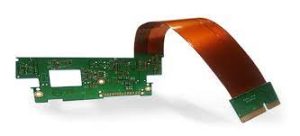Components Verified For Quality During Rigid Flex PCB Manufacturing
As the name implies, rigid-flex PCBs combine both rigid and flexible sections of a circuit board. They can be folded and bent to accommodate tight spaces, making them ideal for compact and densely packed electronic devices. Rigid-flex PCBs can also withstand physical stress and vibrations, improving overall device reliability. However, achieving high-quality rigid-flex PCBs requires careful planning and rigorous quality control.
During fabrication, rigid flex pcb manufacturer must be verified for consistency and quality before assembly. In addition, the flex sections of the board must be properly transitioned to and from the rigid sections to avoid impedance mismatches and signal degradation. Rigid-flex PCBs must also be designed to meet a specific level of durability and reliability, depending on their intended use.
Components are verified for quality during the manufacturing process to ensure that they are compatible with the overall design and functionality of the Printed Circuit Board (PCB). This includes assessing factors such as voltage ratings, current handling capabilities, and frequency characteristics. It is also imperative to consider the track record of component manufacturers, as well as their reputation for longevity and performance.
Once all components are verified for quality, they must be installed on the rigid-flex PCB in accordance with the design specifications. This is a critical step, as errors in installation can lead to performance issues or even failure of the entire system. To prevent these issues, it is crucial to verify that the component mounting holes match the required size and tolerances, and that all traces have been properly routed. In addition, it is important to ensure that all tools used during the assembly process are readily available, including soldering irons, tweezers, flux, solder wire, desoldering braid or pump, and magnification aids if needed.

How Are Components Verified For Quality During Rigid Flex PCB Manufacturing?
Using an optical inspection system or automated pick-and-place machines, the components are positioned on the rigid areas of the PCB based on the design specifications. During this process, it is essential to conduct visual inspections to identify any errors that require immediate correction.
The assembled PCBs are then transferred to reflow ovens, where controlled heating profiles melt solder paste and form reliable electrical connections between components and pads. During this step, it is also important to perform post-solder inspections with magnification aids to verify that all solder joints are free of defects.
When the reflow process is complete, the PCBs are then cut to length and laminated together using glass and PI. This final step is necessary to encapsulate the rigid-flex sections and protect them from environmental factors such as heat, humidity, and chemicals. During the lamination process, it is vital to check for any defects that may affect the performance and reliability of the circuit board.
Ultimately, a successful rigid-flex PCB begins with effective communication and collaboration between the designers and PCB manufacturer. Creating a prototype is an excellent way to test and validate the design before committing to full-scale production. It is also crucial to choose an experienced rigid-flex pcb manufacturer that has experience producing rigid-flex PCBs and can provide the necessary technical expertise for meeting unique project requirements.



